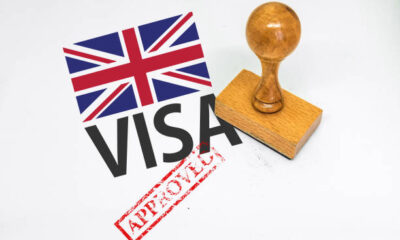Immigration
How to apply for transit visa
Applying for a transit visa is a necessary step if you plan to pass through a country en route to your final destination but do not intend to stay in that country for an extended period. Transit visas are typically required when you have a layover or a connecting flight in a country that is not your destination. The specific process for applying for a transit visa can vary depending on the country you are transiting through, so it’s essential to check the requirements and procedures of the specific country’s embassy or consulate. However, here is a general guide on how to apply for a transit visa:
1. Determine If You Need a Transit Visa:
Check the transit visa requirements of the country you will be passing through. Not all countries require transit visas, and the necessity can depend on factors such as your nationality, the length of your layover, and the airport you will be using.
2. Identify the Transit Country:
Know the specific country you will transit through, as different countries have different visa requirements. Make sure to understand the rules and regulations for transit visas in that country.
3. Gather Required Documents:
Prepare the necessary documents for your transit visa application. Commonly required documents may include:
- A valid passport with at least six months’ validity beyond your intended date of departure from the transit country.
- A confirmed onward ticket to your final destination.
- A visa for your final destination (if required).
- Completed visa application form (downloadable from the embassy or consulate website of the transit country).
- Passport-sized photos that meet the specific size and format requirements of the transit country.
- Proof of funds to cover your stay in case of an extended layover.
4. Check Processing Times:
Review the processing times for transit visa applications. Some countries offer expedited processing for an additional fee, while others may have longer processing times.
5. Visit the Embassy or Consulate Website:
Go to the official website of the embassy or consulate of the transit country in your home country. There, you will find detailed information on the visa application process, including application forms, required documents, fees, and contact details.
6. Complete the Visa Application Form:
Download and complete the visa application form provided on the embassy or consulate website. Fill it out accurately and legibly.
7. Pay the Visa Fee:
Pay the visa fee, which can typically be done through various payment methods, such as online payments, bank transfers, or in-person payments at the embassy or consulate.
8. Schedule an Appointment:
In some cases, you may need to schedule an appointment to submit your visa application in person at the embassy or consulate. Check the embassy’s website for appointment procedures and availability.
9. Attend the Interview (if required):
Some countries may require an interview as part of the visa application process. Attend the interview at the designated time and location.
10. Submit Your Application:
Submit your visa application and all required documents to the embassy or consulate. Ensure that you have made copies of all your documents for your records.
11. Track Your Application:
If the embassy or consulate provides a tracking system, monitor the status of your visa application.
12. Collect Your Visa:
Once your transit visa is approved, follow the instructions provided by the embassy or consulate to collect your visa.
13. Prepare for Your Journey:
Make sure to have all your travel documents, including your passport with the transit visa, ready for your journey.
Remember that transit visa requirements and procedures can change, so always consult the official website of the embassy or consulate of the transit country for the most up-to-date information and guidance on how to apply for a transit visa. Additionally, it’s advisable to start the application process well in advance of your travel date to allow for any processing delays.











